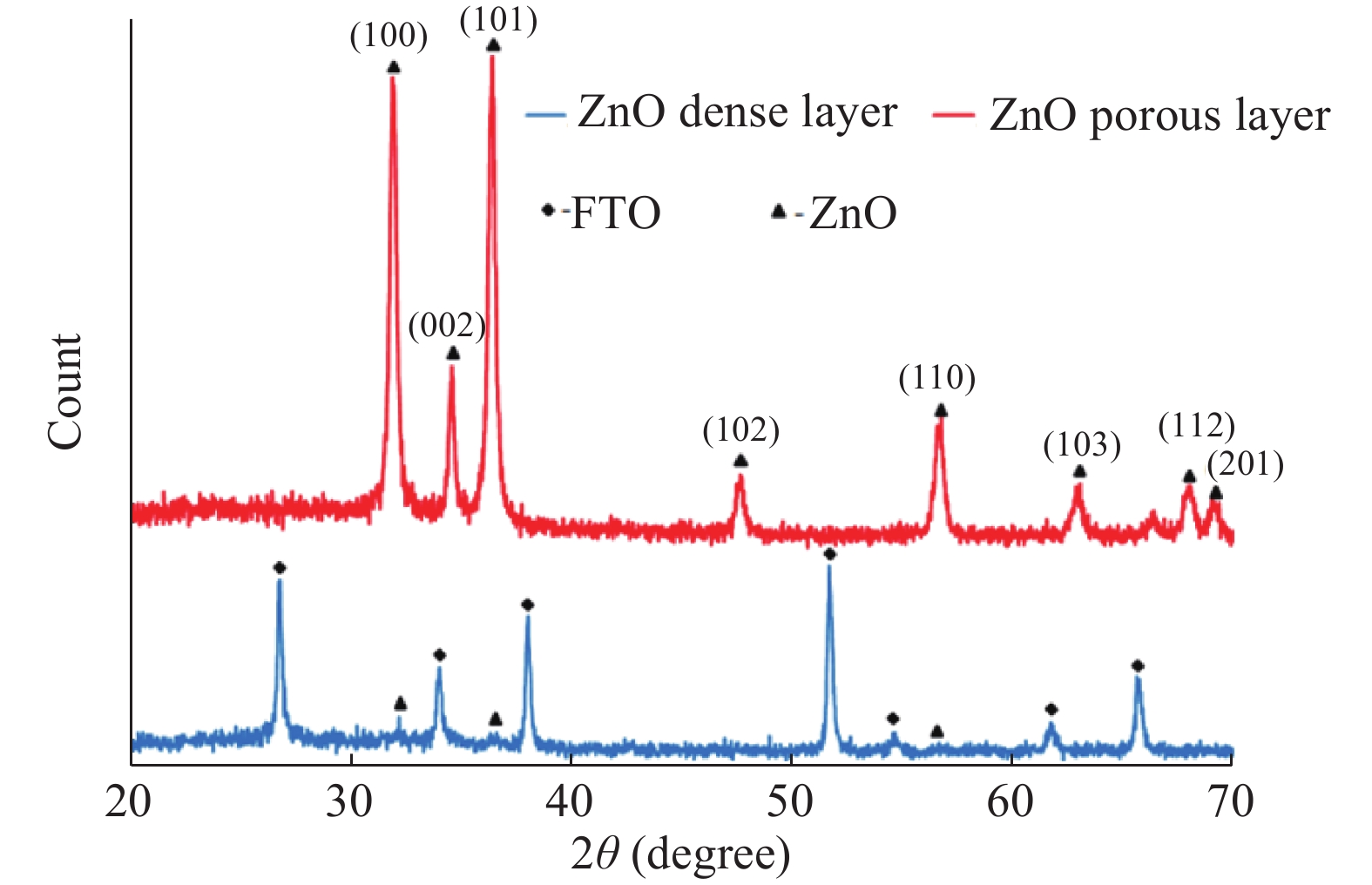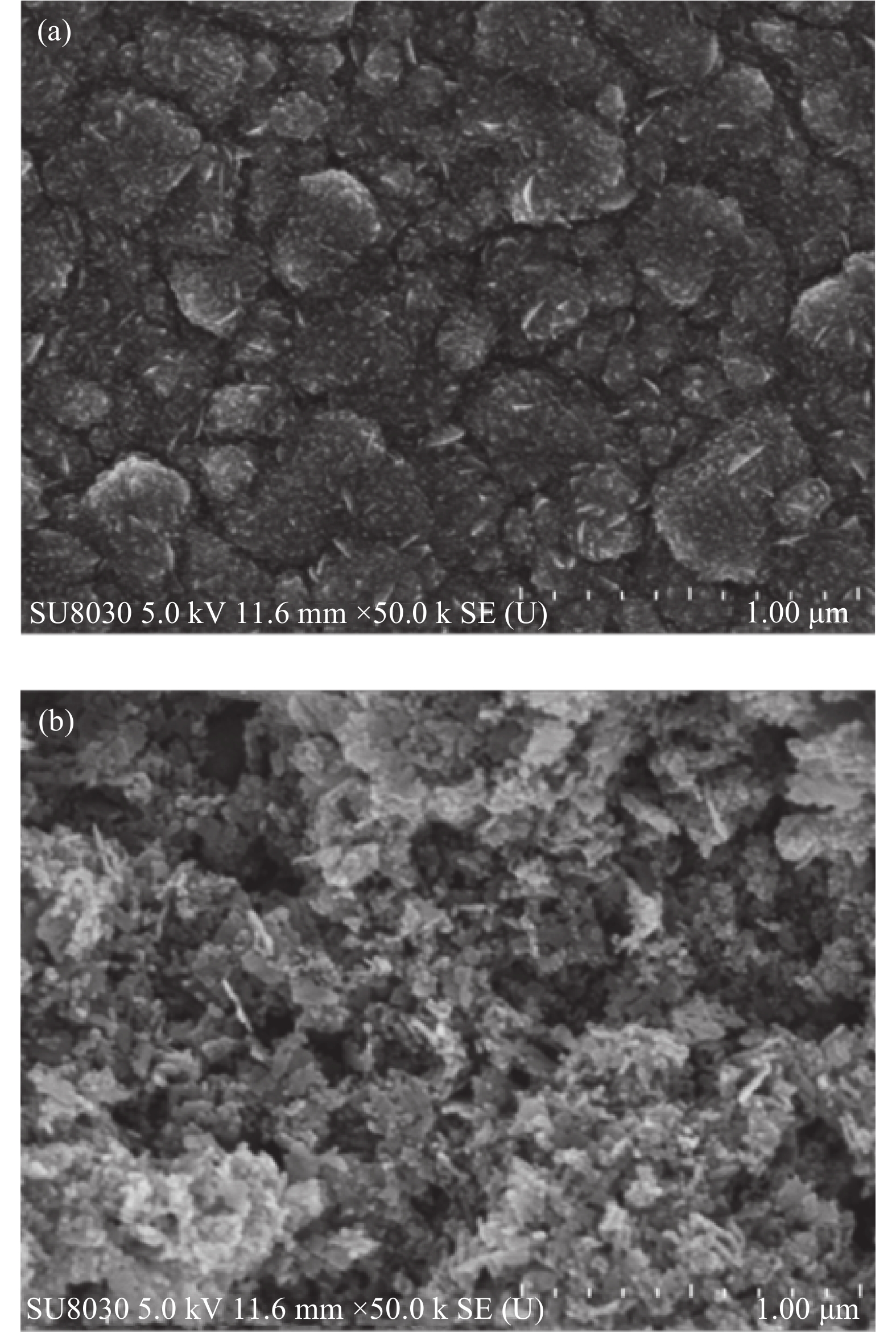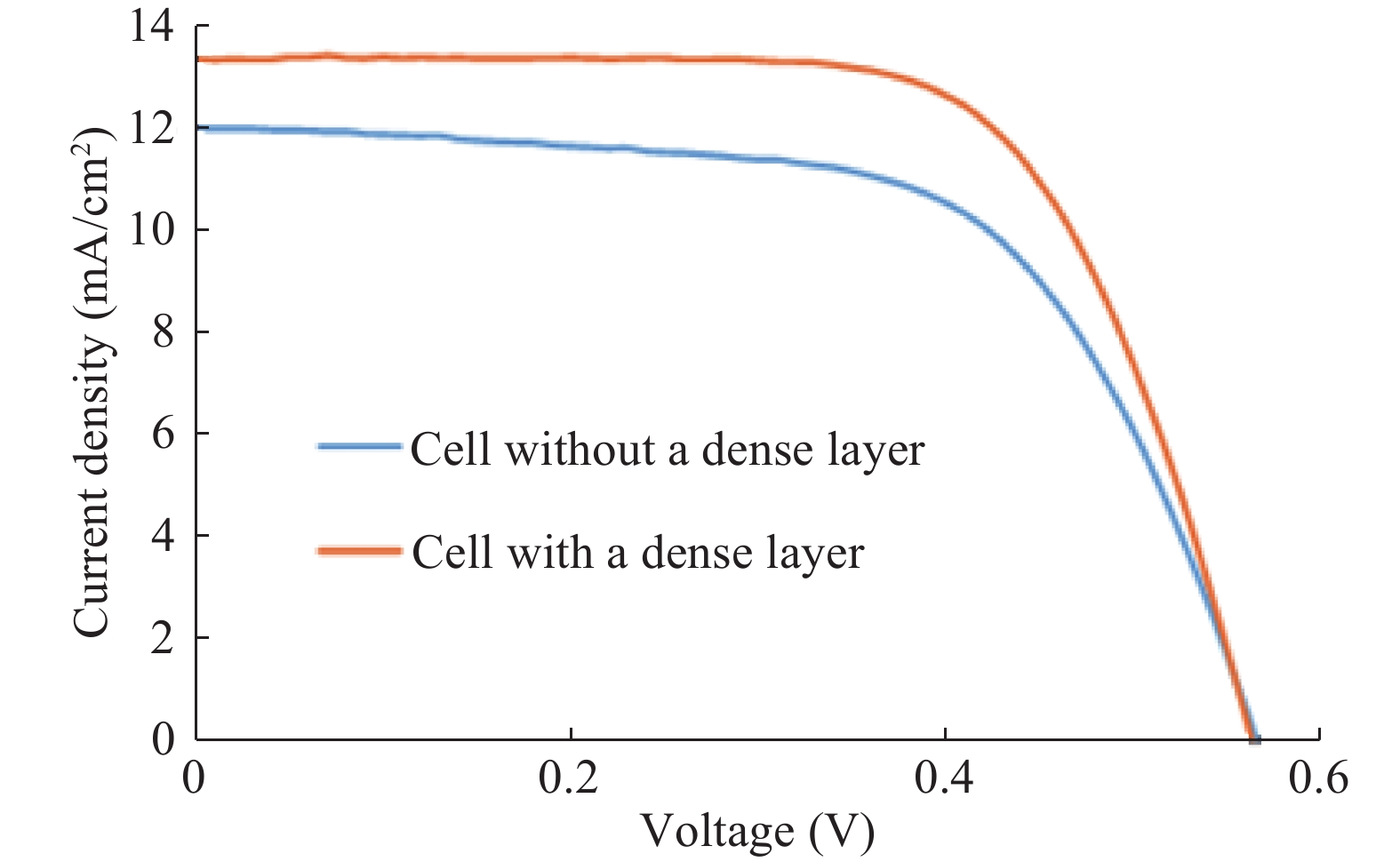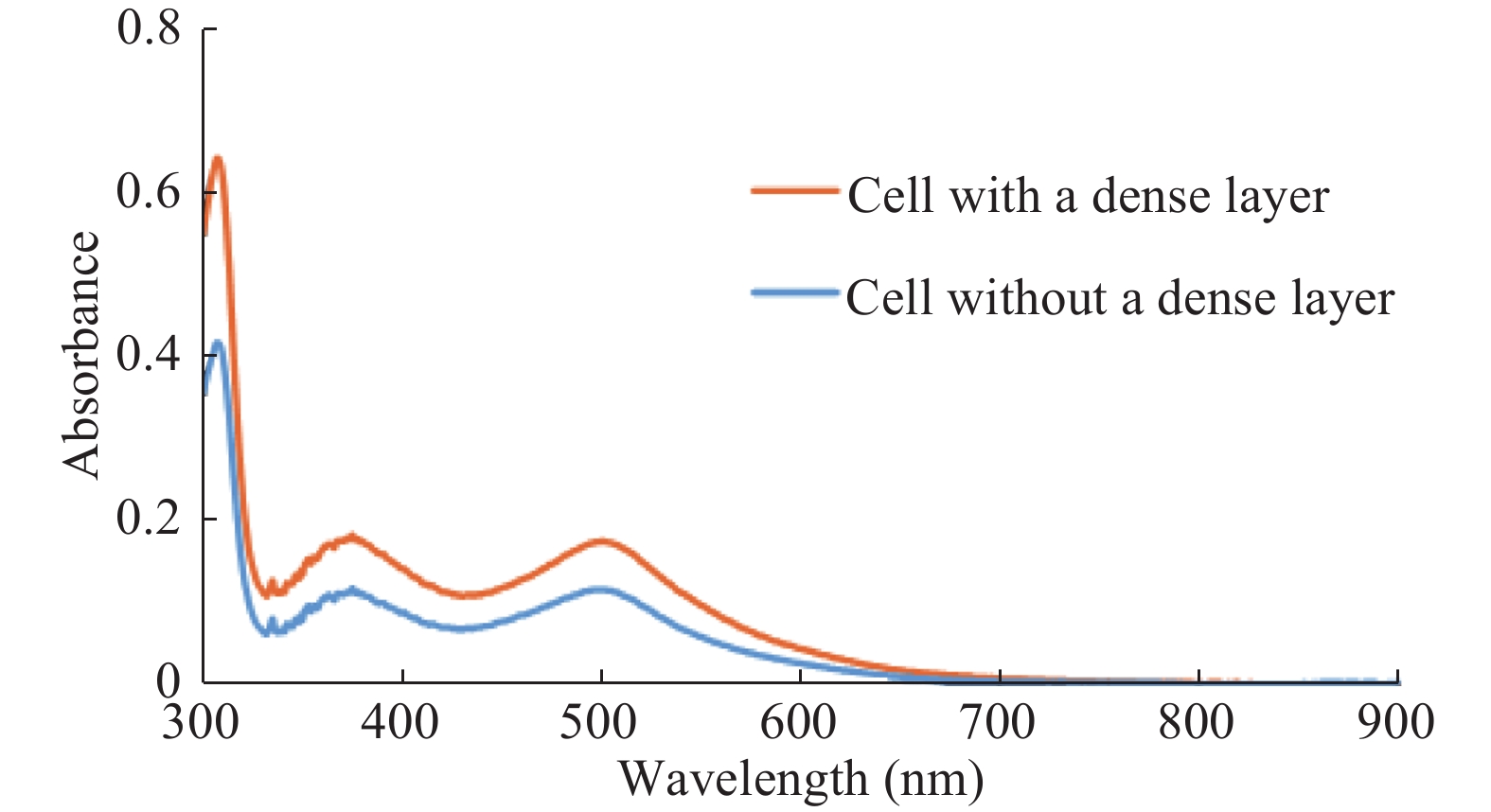| Citation: |
G. R. A. Kumara, U. Deshapriya, C. S. K. Ranasinghe, E. N. Jayaweera, R. M. G. Rajapakse. Efficient dye-sensitized solar cells from mesoporous zinc oxide nanostructures sensitized by N719 dye[J]. Journal of Semiconductors, 2018, 39(3): 033005. doi: 10.1088/1674-4926/39/3/033005
****
G. R. A. Kumara, U. Deshapriya, C. S. K. Ranasinghe, E. N. Jayaweera, R. M. G. Rajapakse. Efficient dye-sensitized solar cells from mesoporous zinc oxide nanostructures sensitized by N719 dye[J]. J. Semicond., 2018, 39(3): 033005. doi: 10.1088/1674-4926/39/3/033005.
|
Efficient dye-sensitized solar cells from mesoporous zinc oxide nanostructures sensitized by N719 dye
DOI: 10.1088/1674-4926/39/3/033005
More Information
-
Abstract
Dye-sensitized solar cells (DSCs) have attracted a great deal of attention due to their low-cost and high power conversion efficiencies. They usually utilize an interconnected nanoparticle layer of TiO2 as the electron transport medium. From the fundamental point of view, faster mobility of electrons in ZnO is expected to contribute to better performance in DSCs than TiO2, though the actual practical situation is quite the opposite. In this research, we addressed this problem by first applying a dense layer of ZnO on FTO followed by a mesoporous layer of interconnected ZnO nanoparticle layer, both were prepared by spray pyrolysis technique. The best cell shows a power conversion efficiency of 5.2% when the mesoporous layer thickness is 14 μm and the concentration of the N719 dye in dye coating solution is 0.3 mM, while a cell without a dense layer shows 4.2% under identical conditions. The surface concentration of dye adsorbed in the cell with a dense layer and that without a dense layer are 5.00 × 10−7 and 3.34 × 10−7 mol/cm2, respectively. The cell with the dense layer has an electron lifetime of 54.81 ms whereas that without the dense layer is 11.08 ms. As such, the presence of the dense layer improves DSC characteristics of ZnO-based DSCs. -
References
[1] O’Regan B, Grätzel M. A low-cost, high-efficiency solar cell based on dye-sensitized colloidal TiO2 films. Nature, 1991, 353: 737 doi: 10.1038/353737a0[2] Zhang Q, Dandeneau C. ZnO nanostructures for dye-sensitized solar cells. Adv Mater, 2009, 21: 4087 doi: 10.1002/adma.v21:41[3] Kumara G R A, Tennakone K, Perera V P S, et al. Efficient dye-sensitize photoelectrochemical cells made from nanocrystalline tin (IV) oxide-zinc oxide composite films. J Phys D, 2001, 34: 868 doi: 10.1088/0022-3727/34/6/306[4] Tennakone K, Kumara G R A, Kottegoda I R M, et al. An efficient dye-sensitized photoelectrochemical solar cell made from oxides of tin and zinc. Chem Commun, 1999, 1: 15[5] Onwona-Agyeman B, Nakao M, Kumara G R A. Photoelectrochemical solar cells made from SnO2/ZnO films sensitized with an indoline dye. J Mater Res, 2010, 25: 1838 doi: 10.1557/JMR.2010.0235[6] Burschka J, Pellet N, Moon S J, et al. Sequential deposition as a route to high-performance perovskite-sensitized solar cells. Nature, 2013, 499: 316 doi: 10.1038/nature12340[7] Kumara G R A, Tiskumara J K, Ranasinghe C S K, et al. Efficient solid-state dye-sensitized n-ZnO/D-358 dye/p-CuI solar cells. Electrochim Acta, 2013, 94: 34 doi: 10.1016/j.electacta.2013.01.099[8] Ozgur U, Alivov Y. Preparation and photoluminescence properties of RF-sputtered ZnO films. Appl Phys, 2005, 98: 041301 doi: 10.1063/1.1992666[9] Cheng H M, Hsieh W F. High-efficiency metal-free organic-dye-sensitized solar cells with hierarchical ZnO photoelectrode. Energy Environ Sci, 2010, 3: 442 doi: 10.1039/b915725e[10] Premaratne K, Kumara G R A, Rajapakse R M G, et al. Highly efficient optically semi-transparent, ZnO-based dye-sensitized solar cells with Indoline D-358 as the dye. J Photochem Photobiol A, 2012, 229: 29 doi: 10.1016/j.jphotochem.2011.12.010[11] Baxter J B, Aydil E S. Synthesis and characterization of ZnO nanowires and their integration into dye-sensitized solar cells. Appl Phys Lett, 2005, 86: 053114 doi: 10.1063/1.1861510[12] Martinson A B F, Goes M S, Fabregat-Santiago F, et al. Electron transport in dye-sensitized solar cells based on ZnO nanotubes: evidence for highly efficient charge collection and exceptionally rapid dynamics. J Phys Chem A, 2009, 113: 4015 doi: 10.1021/jp810406q[13] Jiang C. Improved dye-sensitized solar cells with a ZnO-nanoflower photoanode. Appl Phys Lett, 2007, 90: 263501 doi: 10.1063/1.2751588[14] Hosono E, Fujihara S, Honma I, et al. The fabrication of an upright-standing zinc oxide nanosheet for use in dye-sensitized solar cells. Adv Mater, 2005, 17: 2091 doi: 10.1002/(ISSN)1521-4095[15] Chiu W. Efficient electron transport in tetrapod-like ZnO metal-free dye-sensitized solar cells. Energy Environ Sci, 2009, 2: 694 doi: 10.1039/b902595m[16] Wang X, Ding Y, Yuan D, et al. Reshaping the tips of ZnO nanowires by pulsed laser irradiation. Nano Res, 2012, 5: 412 doi: 10.1007/s12274-012-0222-5[17] Ko S. Nanoforest of hydrothermally grown hierarchical ZnO nanowires for a high efficiency dye-sensitized solar cell. Nano Lett, 2011, 11: 666 doi: 10.1021/nl1037962[18] Hsu Y F, Xi Y Y, Yip C, et al. Dye-sensitized solar cells using ZnO tetrapods. J Appl Phys, 2008, 103: 083114 doi: 10.1063/1.2909907[19] Wu M K, Ling T, Xie Y, et al. Performance comparison of dye-sensitized solar cells with different ZnO photoanodes. Semicond Sci Technol, 2011, 26: 105001 doi: 10.1088/0268-1242/26/10/105001[20] Keis K, Bauer C, Boschloo G, et al. Nanostructured ZnO electrodes for dye-sensitized solar cell applications. J Photochem Photobio A, 2002, 148: 57 doi: 10.1016/S1010-6030(02)00039-4[21] Zhang Q, Chou T P, Russo B, et al. Aggregation of ZnO nanocrystallites for high conversion efficiency in dye-sensitized solar cells. Angew Chem Int Ed, 2008, 47: 2402 doi: 10.1002/(ISSN)1521-3773[22] Saito M, Fujihara S. Large photocurrent generation in dye-sensitized ZnO solar cell. Energy Environ Sci, 2008, 1: 280 doi: 10.1039/b806096g[23] Rani S, Shishodia P. Development of a dye with broadband absorbance in visible spectrum for an efficient dye-sensitized solar cell. J Renew Sustain Energy, 2010, 2: 043103 doi: 10.1063/1.3463056[24] Memarian N, Concina I, Braga A, et al. Hierarchically assembled ZnO nanocrystallites for high-efficiency dye-sensitized solar cells. Angew Chem Int Ed, 2011, 50: 12321 doi: 10.1002/anie.v50.51[25] Shi Y, Wang K, Du Y, et al. Solid-state synthesis of ZnO nanostructures for quasi-solid dye-sensitized solar cells with high efficiencies up to 6.46%. Adv Mater, 2013, 25: 4413 doi: 10.1002/adma.v25.32[26] Bisquert J, Fabregat-Santiago F, Mora-Seró I, et al. Electron lifetime in dye-sensitized solar cells: theory and interpretation of measurements. J Phys Chem C, 2009, 113(40): 17278 doi: 10.1021/jp9037649[27] Wang Q, Moser J. Electrochemical impedance spectroscopic analysis of dye-sensitized solar cells. J Phys Chem B, 2005, 109: 14945 doi: 10.1021/jp052768h -
Proportional views






 DownLoad:
DownLoad:


















